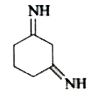Which of the following is least stable ?
C6H5+CH2
p−CH3O−C6H4−+CH2
p−NO2−C6H4−+CH2
p−HO−C6H4−+CH2
To determine which of the given carbocations is the least stable, we need to analyze the stability of each carbocation based on the substituents attached to the benzene ring and their electronic effects. Here’s a step-by-step solution:
Step 1: Identify the Carbocations
We have four carbocations to analyze:
1. Benzyl Carbocation (with no substituents)
2. Benzyl Carbocation with a methoxy group (–OCH₃)
3. Benzyl Carbocation with a nitro group (–NO₂)
4. Benzyl Carbocation with a hydroxy group (–OH)
Step 2: Understand Carbocation Stability
Carbocation stability is influenced by the nature of the substituents on the benzene ring:
- Electron-donating groups (EDGs) stabilize carbocations by donating electron density through resonance (e.g., –OCH₃ and –OH).
- Electron-withdrawing groups (EWGs) destabilize carbocations by pulling electron density away (e.g., –NO₂).
Step 3: Analyze Each Carbocation
1. Benzyl Carbocation (no substituents): This carbocation has no additional stabilizing or destabilizing effects. It is relatively stable due to resonance with the benzene ring.
2. Benzyl Carbocation with Methoxy Group (–OCH₃): The methoxy group is an EDG and provides resonance stabilization (+M effect). This makes the carbocation more stable compared to the first one.
3. Benzyl Carbocation with Nitro Group (–NO₂): The nitro group is an EWG and has a –M effect, which destabilizes the carbocation. This is because it withdraws electron density from the positively charged carbon, making it less stable.
4. Benzyl Carbocation with Hydroxy Group (–OH): The hydroxy group is also an EDG. It has a +M effect, which stabilizes the carbocation through resonance, similar to the methoxy group.
Step 4: Compare Stability
- The benzyl carbocation with no substituents is moderately stable.
- The one with the methoxy group is more stable due to the strong +M effect.
- The one with the hydroxy group is also stable due to its +M effect.
- The benzyl carbocation with the nitro group is the least stable due to the strong –M effect of the nitro group, which destabilizes the positive charge.
Conclusion
The least stable carbocation among the four is the benzyl carbocation with the nitro group (–NO₂).
---
We have four carbocations to analyze:
1. Benzyl Carbocation (with no substituents)
2. Benzyl Carbocation with a methoxy group (–OCH₃)
3. Benzyl Carbocation with a nitro group (–NO₂)
4. Benzyl Carbocation with a hydroxy group (–OH)
Carbocation stability is influenced by the nature of the substituents on the benzene ring:
- Electron-donating groups (EDGs) stabilize carbocations by donating electron density through resonance (e.g., –OCH₃ and –OH).
- Electron-withdrawing groups (EWGs) destabilize carbocations by pulling electron density away (e.g., –NO₂).
1. Benzyl Carbocation (no substituents): This carbocation has no additional stabilizing or destabilizing effects. It is relatively stable due to resonance with the benzene ring.
2. Benzyl Carbocation with Methoxy Group (–OCH₃): The methoxy group is an EDG and provides resonance stabilization (+M effect). This makes the carbocation more stable compared to the first one.
- The benzyl carbocation with no substituents is moderately stable.
- The one with the methoxy group is more stable due to the strong +M effect.
- The one with the hydroxy group is also stable due to its +M effect.
- The benzyl carbocation with the nitro group is the least stable due to the strong –M effect of the nitro group, which destabilizes the positive charge.
The least stable carbocation among the four is the benzyl carbocation with the nitro group (–NO₂).
Similar Questions
Knowledge Check
Which of the following is the least stable ?
ACH3CH2+CH2BCH3+CH2CH2CH3CCH3−+C∣CH3−CH3DCH3−CH3∣C∣CH3−+CH−C6H5Which of the following is the least stable?
A B
B C
C D
D
Which of the following is the least stable carbocation?
ACH⋅3BCH3CH⋅2C(CH3)2CH⋅D(CH3)3C⋅
Which one of the following is least stable resonating structure ?
View SolutionWhich of the following is the least stable form of cyclohexane?
View SolutionWhich of the following is the least stable conformer of cyclohexane?
View SolutionWhich of the following is the least stable conformeer of cyclohexane ?
View SolutionWhich of the following is least thermally stable ?
View Solution
